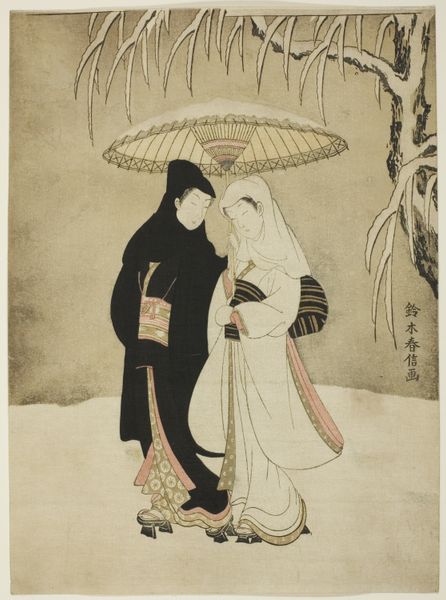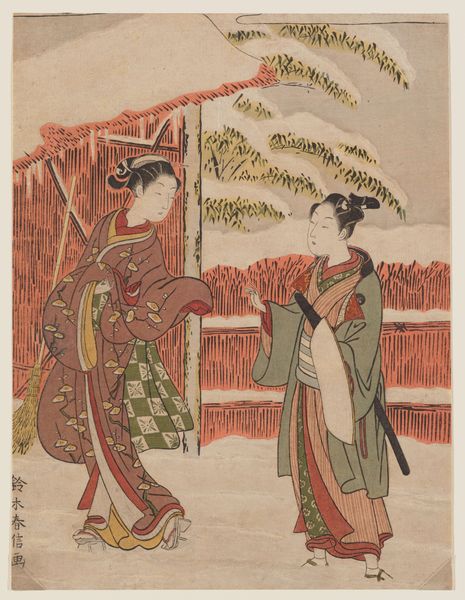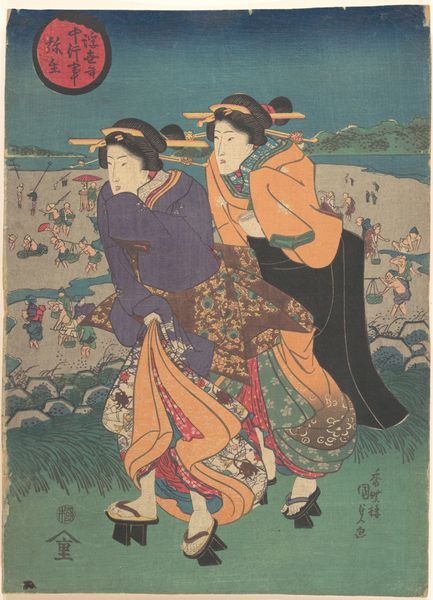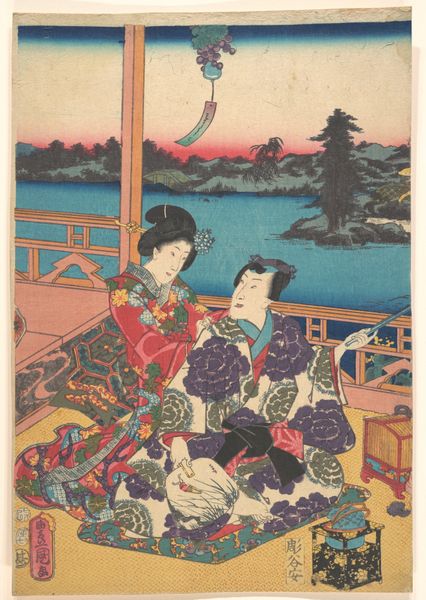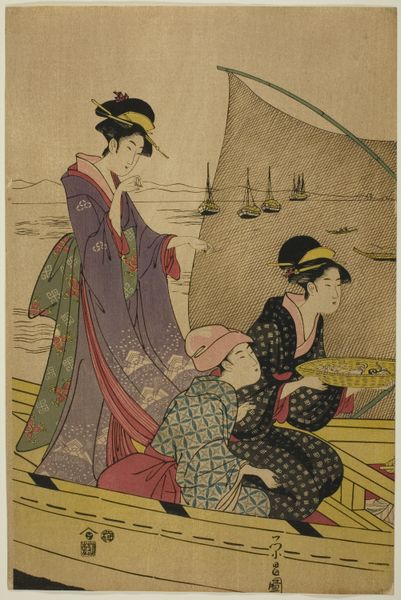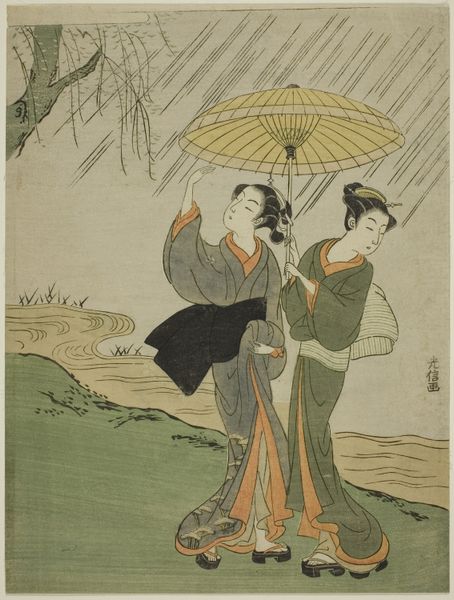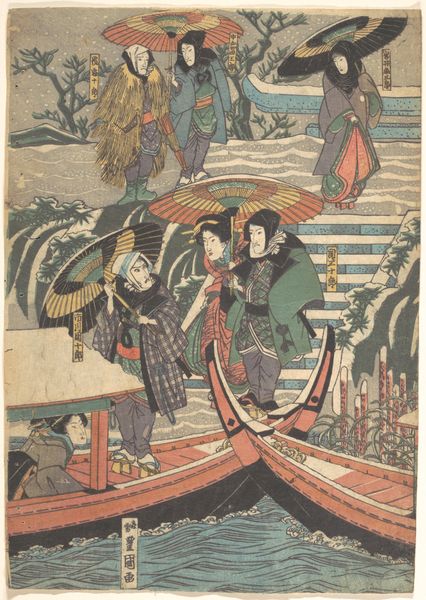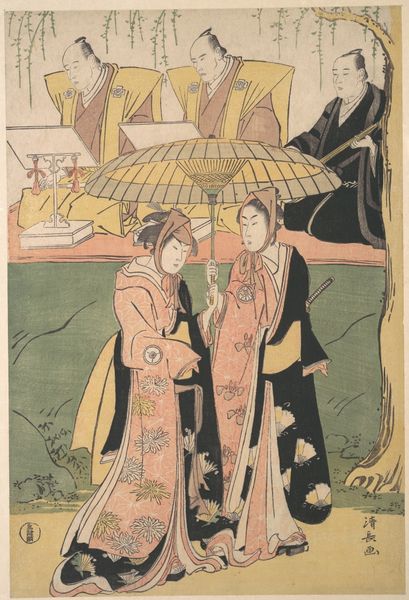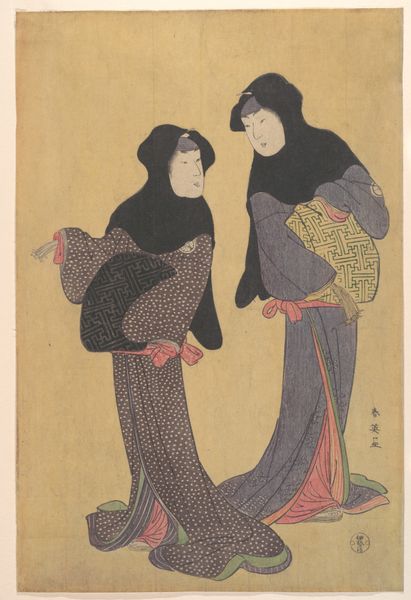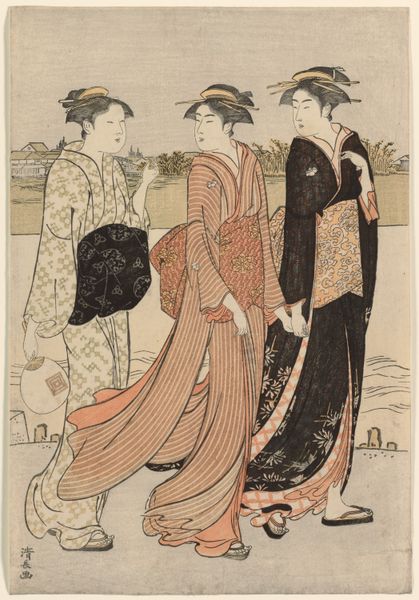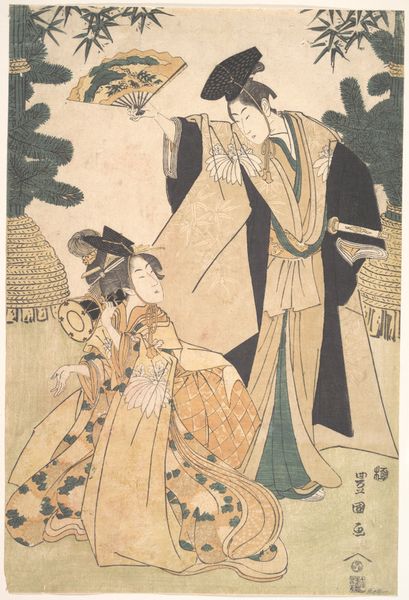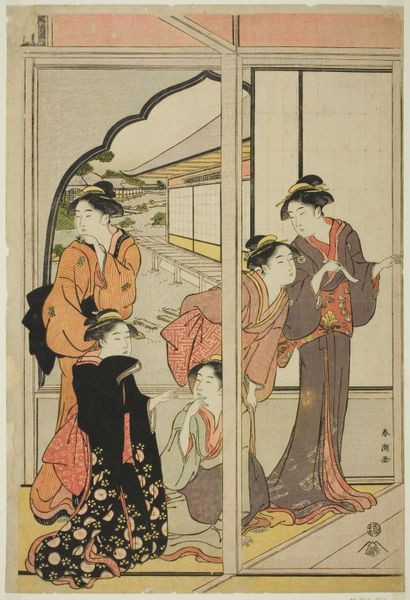
print, woodblock-print
#
snow
#
boat
# print
#
asian-art
#
landscape
#
winter
#
ukiyo-e
#
figuration
#
woodblock-print
#
orientalism
#
genre-painting
Dimensions: Image: 13 3/4 × 9 1/2 in. (34.9 × 24.1 cm)
Copyright: Public Domain
Curator: Looking at this print, the delicate linework and subdued color palette create an immediate impression of stillness, of quiet contemplation in a winter landscape. Editor: Precisely! We’re viewing a woodblock print created by Utagawa Kunisada, dating somewhere between 1800 and 1865. It currently resides here at the Metropolitan Museum of Art. What particularly interests me is its place within the broader Ukiyo-e tradition and its representation of women in a rapidly changing socio-political context. Curator: The composition certainly supports that, doesn't it? The artist guides our eye from the figures to the boats sailing into the distance in the far background. These leading lines really draw me in. What do you make of that snowy scene beyond them? Editor: Beyond the compositional elements, it reveals quite a bit about the period. Snow, a classic element within Japanese art, also underscores the social conditions. Kunisada’s choice to depict the women braving the elements likely resonated with the public of his time, reflecting the hardships they faced while traveling or working. This links to the rise of merchant culture and increased social mobility depicted in Ukiyo-e prints, right? Curator: It's undeniable that such context profoundly influenced not only the print's content but also its accessibility. Woodblock printing made art affordable. Yet, I’m struck by the interplay between flat planes and patterned details—look at those lovely geometric parasols or how the folds of their kimono cascade. I’d argue these formal characteristics allow us to better read what the artist intended. Editor: A fair point. Still, it is crucial to remember how gender roles, popular culture, and the developing economy shaped Kunisada’s creative vision and the viewer's understanding during its circulation. These images were part of shaping identities as much as merely portraying them. Curator: I appreciate that perspective; acknowledging those underlying forces illuminates the richness in Kunisada's work. Looking closely makes you more appreciative. Editor: And analyzing its history allows for greater engagement with a work beyond pure aesthetics, opening up new possibilities for it to speak to diverse audiences and contemporary discourse.
Comments
No comments
Be the first to comment and join the conversation on the ultimate creative platform.
